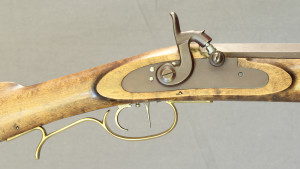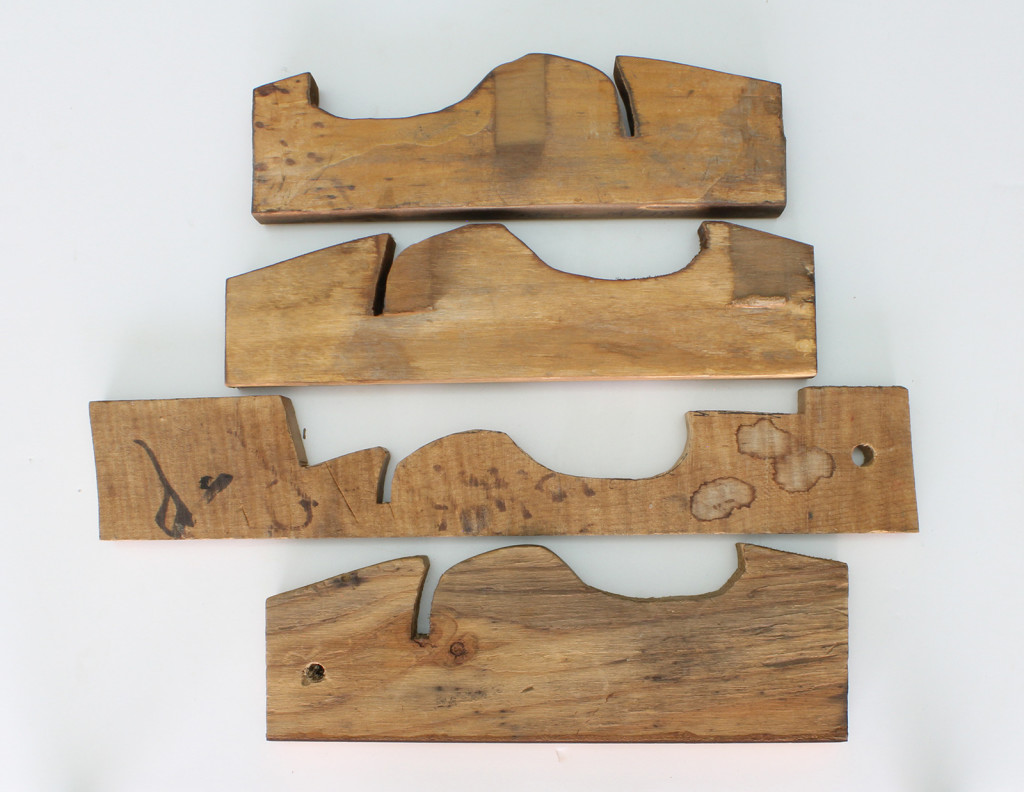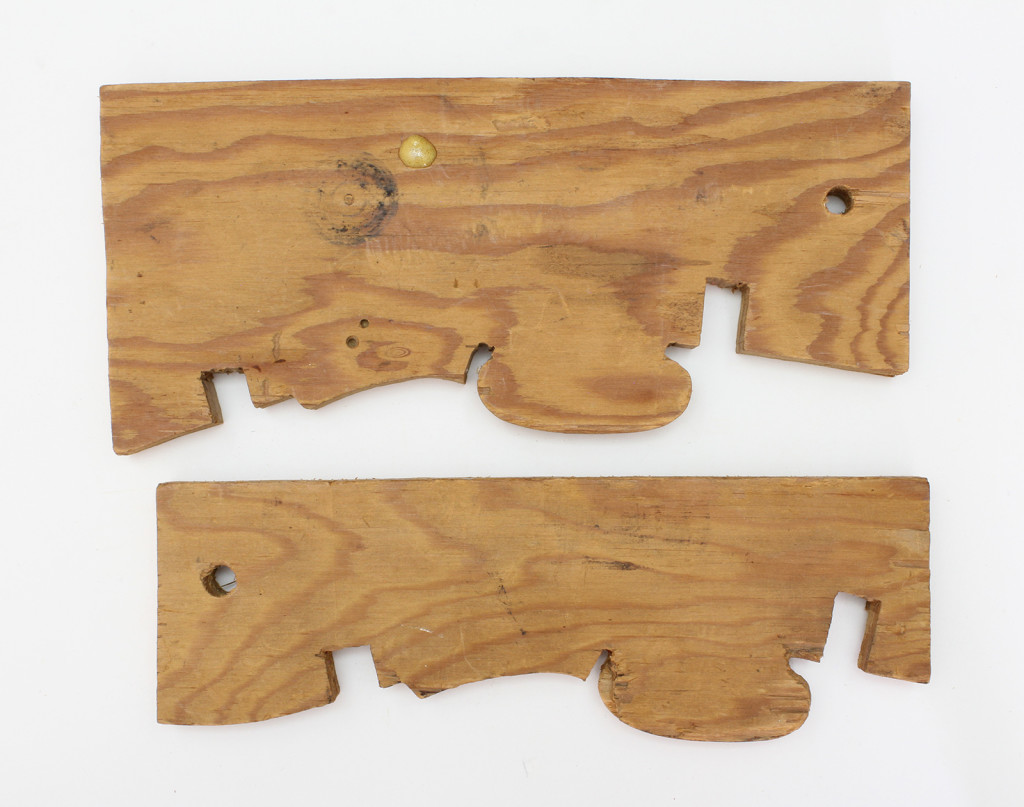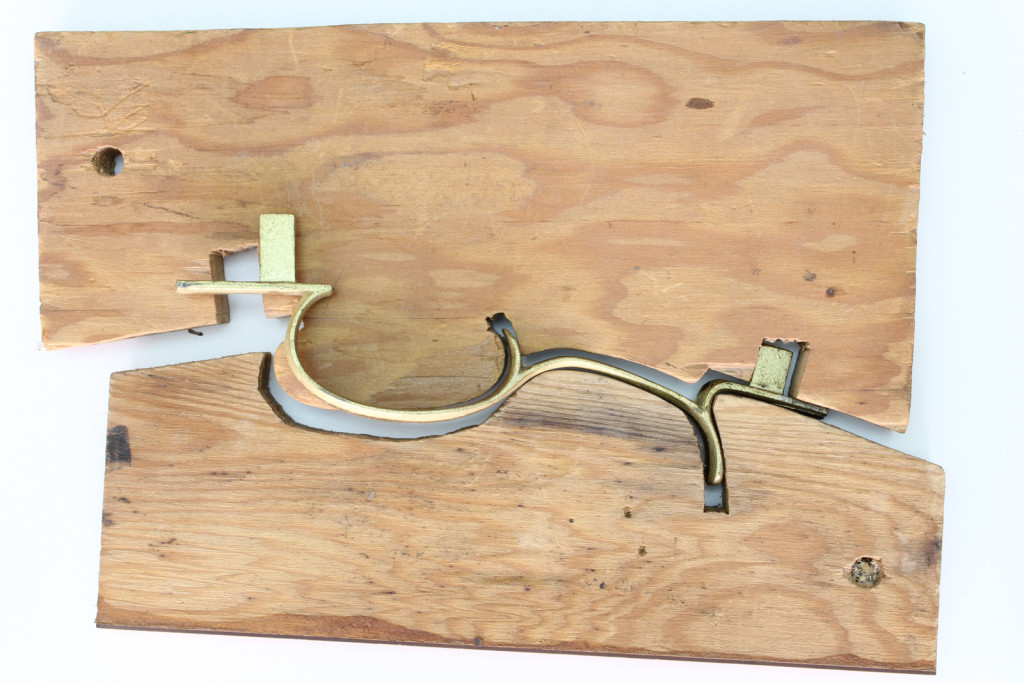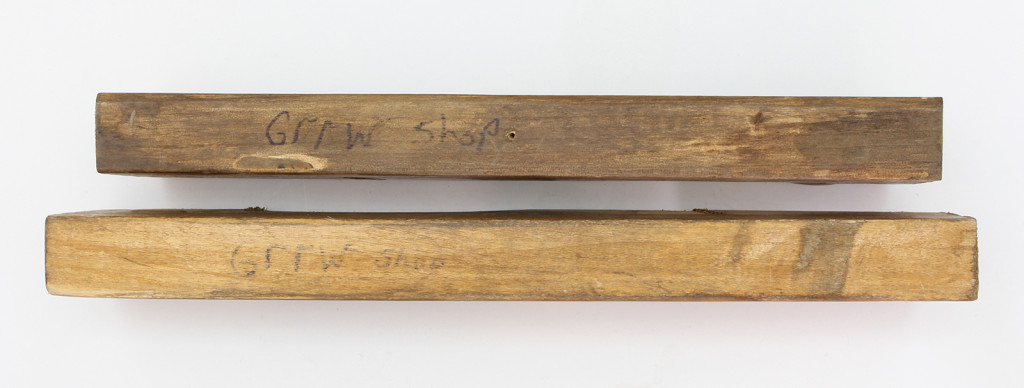Early in my collecting GRRW guns, I noticed that the trigger guard that Phil “Bluejacket” Sanders designed for GRRW’s Leman rifles had a longer bow on rifles with double set triggers than the standard single trigger. I only had a couple of samples to study, but I couldn’t tell if the single trigger guard had been modified to make the bow longer for double triggers or if the longer bow guard was a separate casting. If the guard had been modified, I couldn’t tell if it had a piece inserted in the bow to extend it or if some other method was used. There were no visible lines indicating that a piece of brass had been soldered in the bow as a spacer.
It turns out that they took the single trigger guard and stretched the bow for double triggers.
(Click on pictures to enlarge)
This was confirmed when I purchased a mixed lot of parts and tools (jigs) from a person who had acquired them from Ted Holland, one of the owners of Oregon Trail Riflesmiths of Boise, Idaho. OTR had started up in 1983 making Leman half stock and full stock rifles that were patterned after the GRRW Leman Trade Rifle and Leman Indian Rifle. I say patterned, but in reality they were near exact copies and used castings from the proprietary molds that Bluejacket had developed while at GRRW and probably ordered pre-carved stocks from Reinhart Fajen, who had been supplying GRRW.
Included in the lot were several wood blocks with cutouts for a trigger guard. It was obvious after studying the wood blocks that they were used to stretch the bow on the Bluejacket designed guard.
This is how the unstretched guard fit the blocks.
Two of the wood blocks have “GRRW Shop” written on their edge.
These wood blocks show significant use. There are some indications that the guard may have been hammered while in the jig, but likely the jig is primarily a guide to keep guard extensions and tabs in proper alignment. The bulk of the hammering on the guard bow itself was likely performed outside the jig to thin the bow and thereby stretch it.
For a look at some of the other jigs from GRRW/OTR, go to Drilling the Ramrod Hole.
Back to How They Were Made


